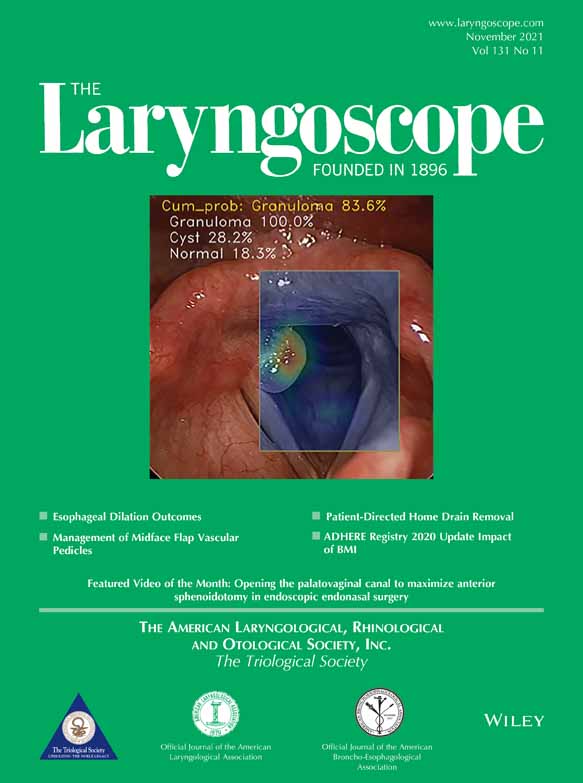Treatment Modalities and Survival Outcomes for Sinonasal Diffuse Large B-Cell Lymphoma
b.m.l. and a.a. contributed equally to this work.
Research reported in this publication was in part supported by the National Institute of General Medical Sciences of the National Institutes of Health under award numbers T32GM008208 (b.m.l.) and T32GM008620 (a.a.). The content is solely the responsibility of the authors and does not necessarily represent the official views of the National Institutes of Health.
Editor's Note: This Manuscript was accepted for publication on April 14, 2021.
The authors have no other funding, financial relationships, or conflicts of interest to disclose.
Abstract
Objectives/Hypothesis
This study utilizes a large population national database to comprehensively analyze prognosticators and overall survival (OS) outcomes of varying treatment modalities in a large cohort of sinonasal diffuse large B-cell lymphoma (SN-DLBCL) patients.
Study Design
Retrospective database study.
Methods
The National Cancer Database was queried for all SN-DLBCL cases diagnosed from 2004 to 2015. Kaplan–Meier log-rank test determined differences in OS based on clinical covariates. Cox proportional-hazards analysis was used to determine clinical and sociodemographic covariates predictive of mortality.
Results
A total of 2,073 SN-DLBCL patients were included, consisting of 48% female with a mean age of 66.0 ± 16.2 years. Overall, 82% of patients were Caucasian, 74% had early-stage disease, and 49% had primary tumors in the paranasal sinuses. Early-stage patients were more likely to receive multi-agent chemoradiotherapy compared to multi-agent chemotherapy alone (P < .001). Multivariable Cox proportional-hazards analysis revealed chemoradiotherapy to confer significantly greater OS improvements than chemotherapy alone (hazard ratio [HR]: 0.61; P < .001). However, subset analysis of late-stage patients demonstrated no significant differences in OS between these treatment modalities (P = .245). On multivariable analysis of chemotherapy patients treated post-2012, immunotherapy (HR = 0.51; P = .024) demonstrated significant OS benefits. However, subset analysis showed no significant advantage in OS with administering immunotherapy for late-stage patients (P = .326). Lastly, for all patients treated post-2012, those receiving immunotherapy had significantly improved OS compared to those not receiving immunotherapy (P < .001).
Conclusions
Treatment protocol selection differs between early- and late-stage SN-DLBCL patients. Early-stage patients receiving chemotherapy may benefit from immunotherapy as part of their treatment paradigm.
Level of Evidence
3 Laryngoscope, 131:E2727–E2735, 2021




